With an uncertain climate future on the horizon, the Pacific Northwest in recent years has experienced a surge in wildfires. The effects of wildfires are felt both physically and mentally, with weeks of hazardous air quality during summer and even smokey days into the fall. These fire events are becoming more frequent and intense thanks to record heat waves and dry summers and winters.
But during these waves of fiery destruction, comes a period of recovery and contemplation. The latest program by the College of Design sought to explore this time of peace and tranquility after a wave of destruction with an Oregon-based Overlook Field School. The work and exhibit was recognized by the American Society of Landscape Architects (ASLA) Student Awards and earned an Honor Award in the Communication category.
“This fun and creative project is a testament to the role art and design play in communicating the value of landscape,” said the 2022 ASLA Awards Jury. The honor reinforces the expertise and hard work of not only the faculty but the students who participated in this annual program.
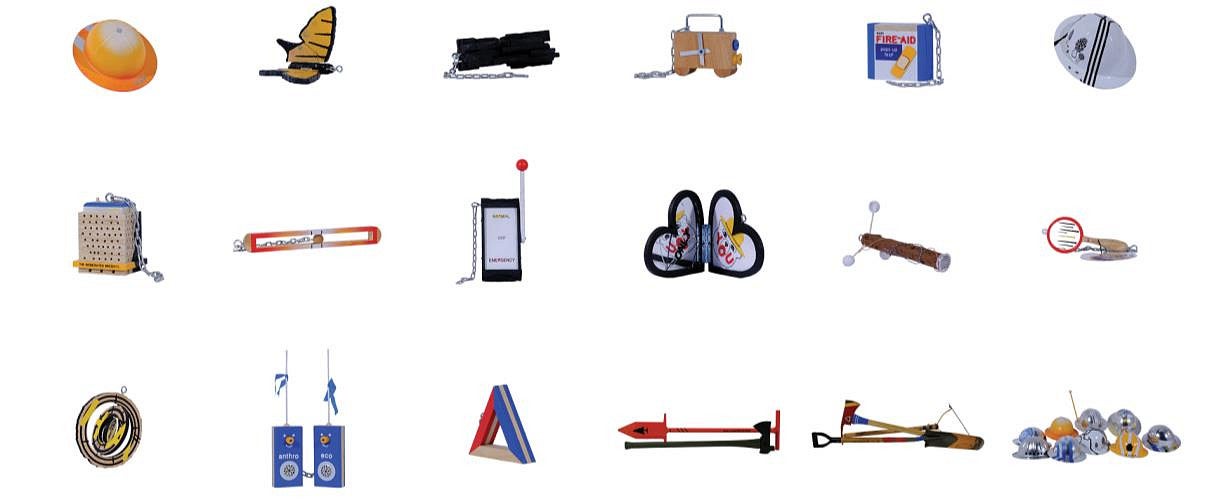
Recovery Charms Photo is courtesy of William Boner, Masayo Simon, Abigail Pierce, Ian Vierck, Nancy Silvers, and David Buckley Borden. Following the forest visits, the students worked on creative explorations led by artist-in-residence, David Buckley Borden. The recovery charm project was an exercise in collective creativity, fabrication skill building, rapid prototyping, material constraint, and design-driven communication.
Typically the summer Overlook Field School is held at the Overlook Field School in Pennsylvania courtesy of the Fuller family, but, due to travel complications during the pandemic, the program was held in the state for the first time. The five-week program, named Recovery, explored the transformation of forests recovering from wildfires and sought to answer the following questions:
- How do we care for the land?
- How does it take care of us?
- What is the meaning of recovery in the face of continual trauma?
The program was managed by Professor of Practice Michael Geffel with additional support from program coordinators Nancy Silvers and Isabela Ospina Rodriguez. The students collaborated with David Buckley Borden, Visiting Professor and artist-in-residence at the University of Oregon, as he led the group through the post-fire sites and the work needed for a public exhibition.
First, students traveled to sites in the McKenzie River Watershed where wildfires had occurred in the past 100 years, where they could see natural sites in different stages of recovery.
Next, students participated in creative skill-building projects including temporary installations at sites and recovery charms (mixed media sculptures) to communicate observations from their visits.
The program concluded with a public exhibition of the students’ final designs of recovery-themed installations at the Mt. Pisgah Arboretum in Eugene. The community was invited to learn about wildfire recovery and view the exhibit.
The following gallery showcases the eight projects that were shown at the final exhibit along with the artist statement.
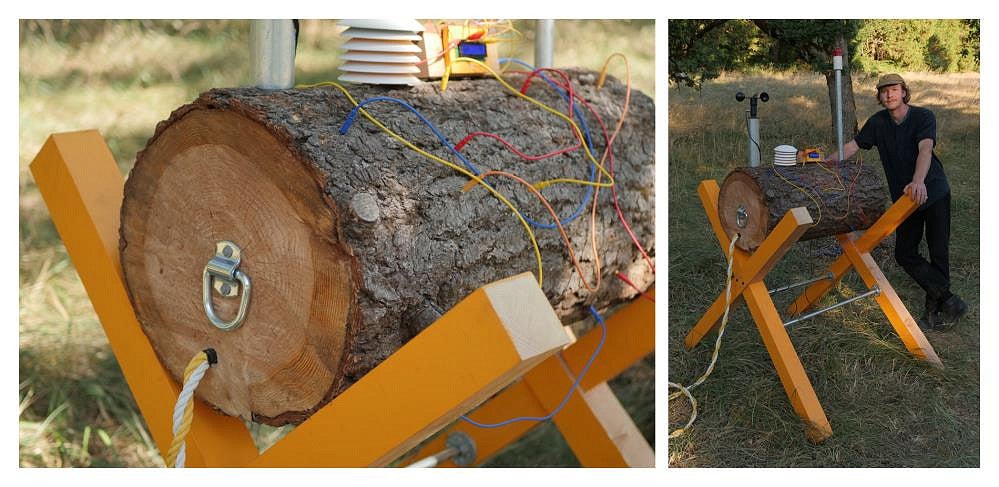
Hyper-Instrument by William Bonner
Inspired by the “wired forest” of HJ Andrews, this piece explores the hybrid world of nature and technology. The living organisms around us have a lot to say, and through sensors, we have the opportunity to tune our ears to their frequencies and listen. The instrument acts as an interface between the complex processes of the environment and our own senses, giving us a broader understanding of the process of recovery over time.

Ripple Effect by Hannah Chapin and Ian Vierck
A snag is an integral part of a forest ecosystem and has a ripple effect that extends far beyond itself. During its decay or after a fire, it provides energy and habitat for mushrooms, insects, mammals, birds, and many other organisms. This installation reflects recovery after death and the connections that extend past mortality.
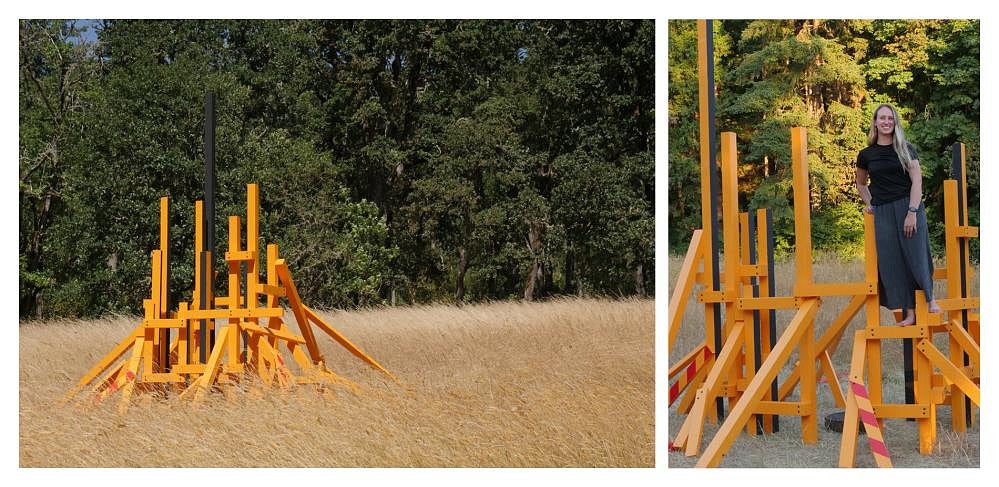
Flair X Flare by Kennedy Rauh
In a post-fire landscape, snags are essential to recovery. The story of the forest is shared through the trees: torn, twisted, burned, clear-cut, re-planted, decayed. Inspired by the upright remains of a Western redcedar, this project explores the typologies of snag-hood using nominal lumber to amplify the difference between the fire-formed snags and logged stumps found in our forests.
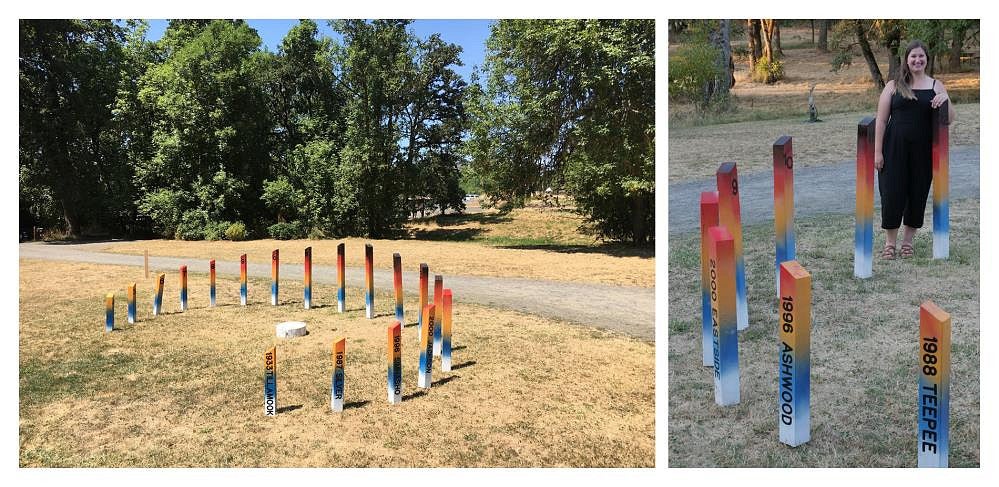
Revolutions of Recovery by Celia Hensey
In this sundial, the viewer is invited to engage directly with the piece. By standing in the center and facing north, the viewer’s shadow will act as the time-telling hand on the sundial. Around the edge of the interactive shadow sundial, each hour marker represents a large wildfire in Oregon’s history. In this way, the sundial not only charts the daily cycles of time – it is a monument to the dynamic cycles of fire and recovery through time.

Butterfly by Rosie Yerke
The endangered Fender’s blue butterfly, which is endemic to the Willamette Valley, plays a vital role in upland prairie and oak savannah ecosystems that rely on the process of prescribed burns to prevent the transition to forest. Inspired by the beauty and movement of the butterfly, this installation highlights the importance of these pollinators in the recovery of burned landscapes.
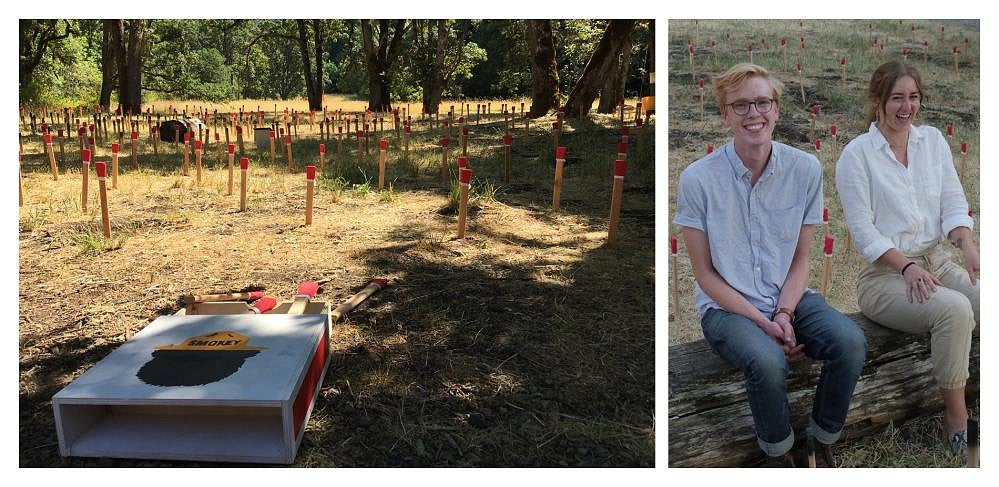
Fuel Load by Hannah Chapin and Ian Vierck
As the climate warms, the effects of drought, heat waves, and wildfires are increasing. This is especially evident in the wildland-urban interface (WUI), the area where houses meet or intermingle with undeveloped wildland vegetation. Homes and communities are not ready for wildfire, especially as they continue to be built and rebuilt in fuel zones. This installation responds to the problem and prompts the question: how can we embrace wildfire and learn to live with it?
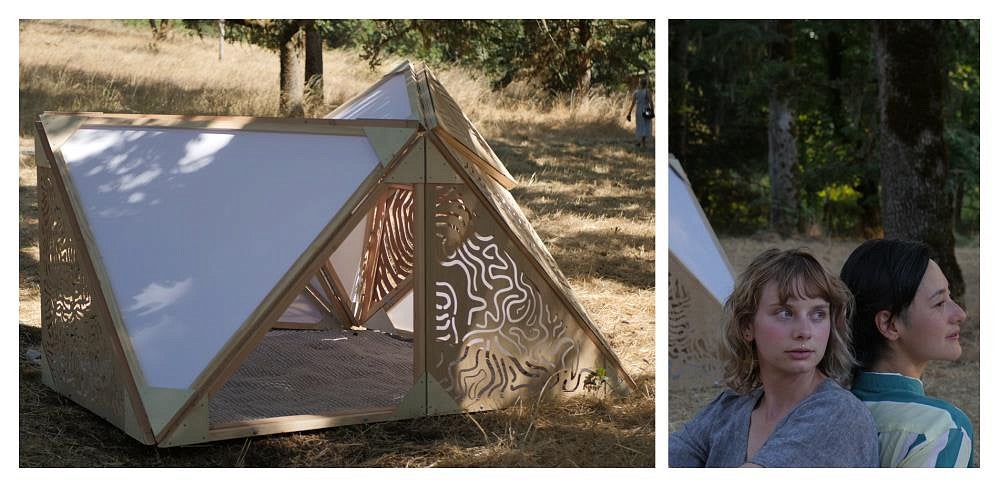
Succession of Light by Audrey Rycewicz and Masayo Simon
Forests are constantly undergoing cycles of change; maturation, disturbance, regrowth. Their natural state is flux, and as changes occur, light patterns shift. We gleaned inspiration from the ever-changing ecosystems of western Oregon. Succession of Light is the sun personified – it provides a space to practice acceptance of the impermanence and fluidity permeating life on Earth. If you have ever reached out your hand to hold a sunbeam, you know that certain things are impossible to grasp on to.
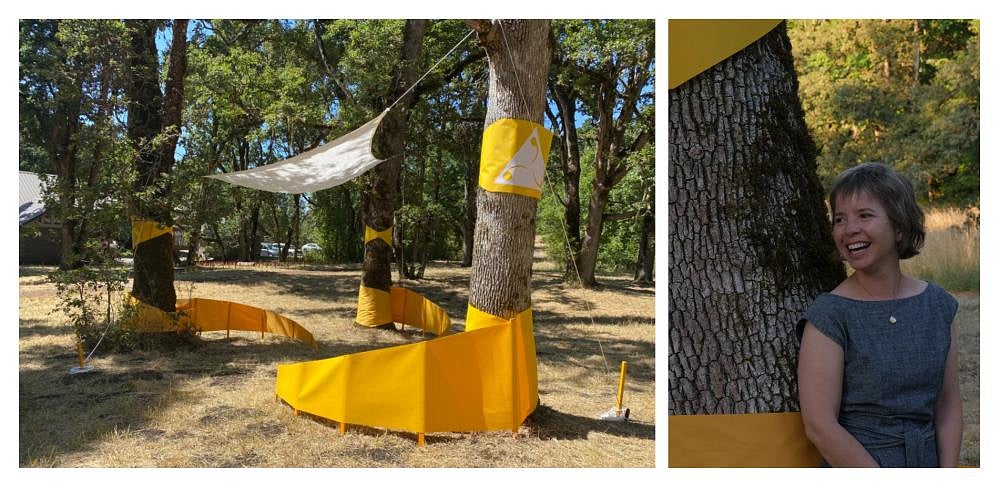
Refugium by Abby Pierce
Refugia are areas where special circumstances enable species or communities to survive environmental instability. It is a compelling concept, both for its ecological meaning but also when considering the human emotional response to disturbance. In this installation, the "pulse" of refugia is represented: first, the embrace of multiple species in an area that can support life while the world around re-arranges itself through disturbance regimes; then the unfurling into the disturbed areas to aid the recovery and re-creation of communities.
Photos are courtesy of Ignacio Lopez Buson and Michael Geffel.
Learn More
